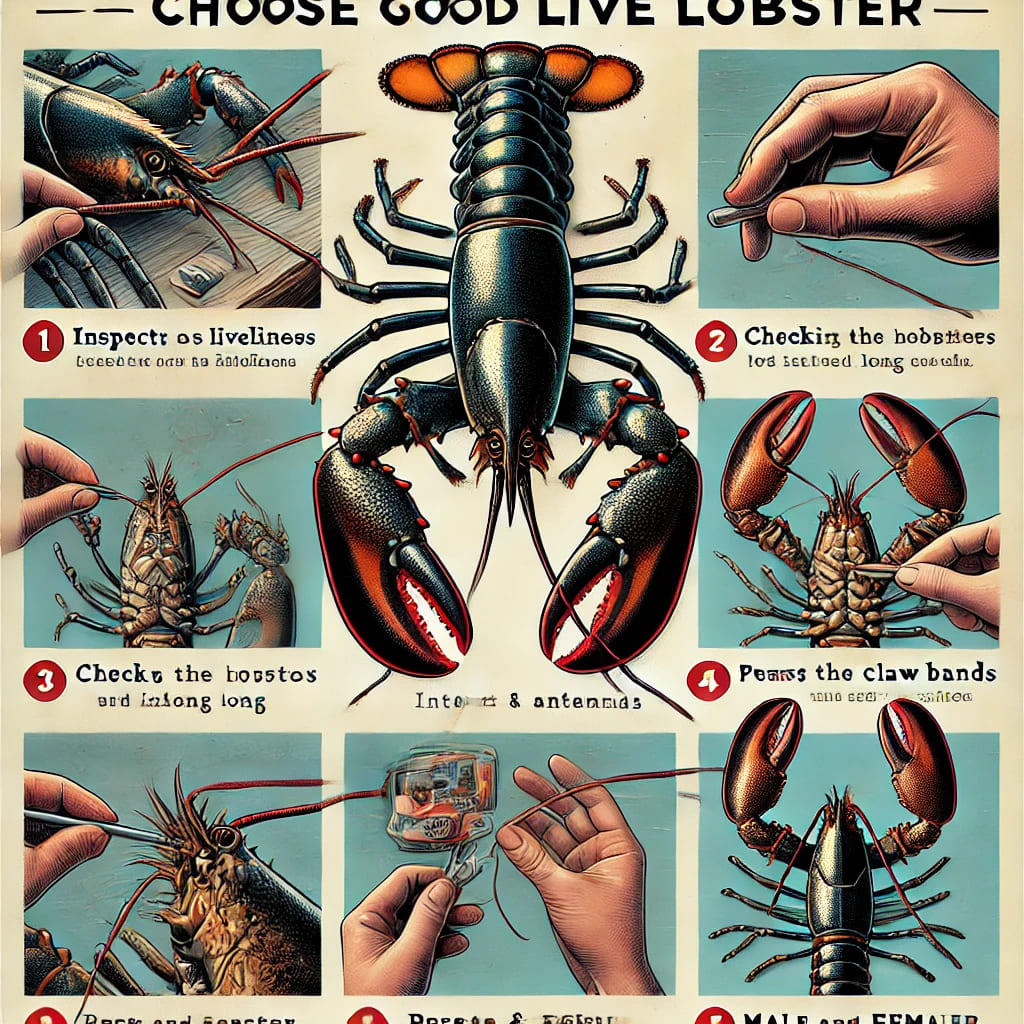Chamberlains of London – Selecting a fresh, high-quality live lobster is essential to enjoying its full flavor and texture. Whether you are a seafood enthusiast or a first-time buyer, understanding the key factors can help you make the best choice. This guide outlines important tips to ensure your lobster is as fresh and delicious as possible.
1. Choose an Active and Healthy Lobster


The liveliness of a lobster is the first sign of its freshness. A healthy lobster will move its claws, flap its tail, and react when handled. To check for freshness:
- Tail Test: Straighten the lobster’s tail. If it quickly curls back, the lobster is fresh and active.
- Antennas: Long and intact antennas indicate the lobster has not been in storage for too long. Broken or missing antennas suggest it may have been in a tank for an extended period.
- Claw Bands: Inspect the bands on the claws. Clean and intact bands indicate the lobster has been freshly caught.
- Avoid Damaged Lobsters: Lobsters with cracked shells or broken claws may have suffered stress or damage, potentially affecting their meat quality.
2. Opt for Hard-Shell Lobsters
Hard-shell lobsters are often the preferred choice because they contain more meat and have a firmer texture. To determine if a lobster has a hard shell:
- Press the Shell: Gently press the sides of the lobster. A hard shell will feel firm and resistant, while a soft shell will feel more pliable.
- Meat Quality: While soft-shell lobsters are easier to crack and peel, they contain less meat and may have a slightly less robust flavor.
“Also Read: 5 Best Seafood Restaurants in London for a Memorable Dining Experience”
3. Understand the Difference Between Male and Female Lobsters


Male and female lobsters offer similar taste profiles, but there are some notable differences:
- Males: These lobsters have larger claws and thicker, stiffer first legs.
- Females: Female lobsters have wider tails and softer first legs. Some buyers prefer females for their roe (eggs), which are considered a delicacy.
4. Consider the Best Season to Buy Lobsters
Timing can significantly affect the quality of your lobster.
- Spring and Fall: The best times to buy Maine lobsters are before Memorial Day and after Labor Day. During these periods, lobsters with hard shells are more abundant.
- Summer: Lobsters caught in summer are often soft-shell, which are easier to handle but may not offer as much meat.
5. Select the Right Size for Your Needs

Live lobsters are available in various sizes, each suitable for different dining purposes. Here are some common categories:
- Chix (1.0 – 1.24 lbs): Ideal for individual servings.
- Quarters (1.25 – 1.49 lbs): A balanced choice for most dishes.
- Halves (1.50 – 1.74 lbs): Popular for main courses.
- Deuces (2.0 – 2.25 lbs): Perfect for hearty meals.
- Jumbos (2.5 lbs and up): Best for group meals or special occasions.
While smaller lobsters are often sweeter, larger ones can deliver a robust flavor if cooked properly.

